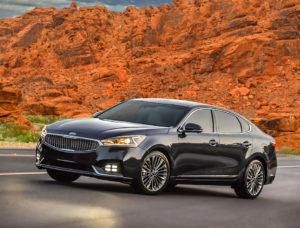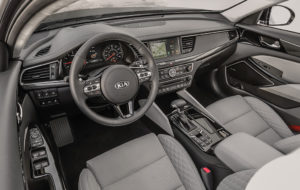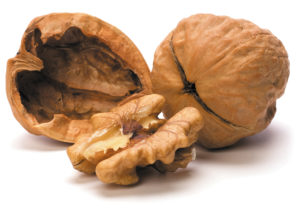The people’s instrument
If Volkswagen was once touted as the “People’s Car” then surely the Harmonica is the people’s instrument. Ironically, they are both of German ancestry. No wonder it is the people’s instrument as it is generally played by everyday people, amateurs and professional musicians. It is quite inexpensive to buy and very transportable. The harmonica, also known as the French harp or mouth organ, is a rectangular metal box made of brass and steel. Most models can easily fit in a shirt pocket and taken anywhere but there are many types and sizes.
 The harmonica is fairly easy to learn and usually comes with detailed instructions on how to play the instrument. You can learn to play it yourself but if one can afford lessons from a teacher, it is probably a better alternative. The harmonica is a very versatile instrument, to be enjoyed as a solo instrument or in a group ensemble.
The harmonica is fairly easy to learn and usually comes with detailed instructions on how to play the instrument. You can learn to play it yourself but if one can afford lessons from a teacher, it is probably a better alternative. The harmonica is a very versatile instrument, to be enjoyed as a solo instrument or in a group ensemble.
Walt Schneider, a childhood friend, said, “When I followed instructions carefully, I could play Stephen Foster’s, Old Black Joe; what a feeling of accomplishment!” In a few weeks he learned all the songs in the instruction book and said his feeling of satisfaction was very high. Schneider started playing the harmonica in the fourth grade and he actually got very good at it. As a young boy and young man I was in awe of his playing ability.
Origins
The ancient ancestors of the harmonica date back to before the time of Christ. Some researchers trace the origins of the harmonica to Laos and others to China. The ancients developed a crude rudimentary form of the instrument.
It took centuries before European craftsmen began to develop an instrument akin to the modern harmonica. In 1821-22, Friedirch Buschmann, a German from Berlin, made an experimental instrument. In 1829, the manufacture of mouth-organs, as they are often called, started in Vienna, Austria. Also during 1829, Charles Wheatstone of London patented his version of the harmonica.
The modern prototype harmonica was invented in 1857 by Matthias Hohner of Trossingen, Germany. The Hohner Harmonica Company is still one of the leading makers of harmonicas and has continually been in business since 1857. The Hohner harmonicas feature duel-action reeds that enable players to activate different notes or pitches while blowing or exhaling into the instrument. Notes are also produced by a second set of reeds when the player inhales or draws air back through the instrument.
Wartime
During the time of the American Civil War, the harmonica became very popular. Because it was small and easy to learn, soldiers on both sides – the Union and the Confederates – used the instrument as a source of entertainment along with singing songs popular on both sides of the conflict.
After the war the harmonica became part of American folk-lore and the folk music scene – its popularity soared. It was a real challenge for the Hohner Harmonica Company to keep up with orders, especially from America.
The popularity of harmonicas during wartime did not stop with the Civil War. The Golden Age of the mouth-organ in America was the years between the two world wars. World War I soldiers on both British and German sides used harmonicas as they went off to war.
By World War II harmonica imports were virtually stopped because of the embargo placed on German products. After the war, normal production was gradually returned.
John Philip Sousa, noted composer and band director, wrote a march called, The Harmonica Wizard, after he heard the Philadelphia Harmonica Band in concert. During the last two thirds of the 20th Century, the harmonica’s popularity became worldwide in many musical genres. It gained favor in blues, jazz, classical music, country music, rock and roll, and other modern forms of popular music. Some popular musicians that included harmonicas in their music were Creedance Clearwater, Bob Dylan, The Beatles, Billy Joel and others.
Before the modern era, numerous players reached Virtuoso status, including Buddy Green, Charlie McCoy, and Borrah Minevitch, who formed the group, Harmonica Rascals. One of the most famous and endearing players was Johnny Paleo, a comedian who dressed in funny costumes and had a group called, The Harmonica Gang. One of the most famous groups was the very popular Harmonicats. These groups reveled in slapstick comedy but excelled in fantastic harmonica technique and musicianship.
In decades past, the harmonica has been featured in Western movies with singing cowboy groups, including Roy Rogers, Gene Autry and The Sons of the Pioneers. Likewise, movies depicting the South and old-time plantation scenes often show the harmonica in scenes of musical entertainment.
Even though it is a small, simple instrument, the harmonica has been enjoyed by people for centuries and will likely continue to be enjoyed for centuries to come. Found in many homes throughout the world, it is loved by millions. The harmonica will always be the people’s instrument.
Please submit your questions and comments to banddirector0@comcast.net Visit our website at danville.org for up-to-date information about the Danville Community Band.






